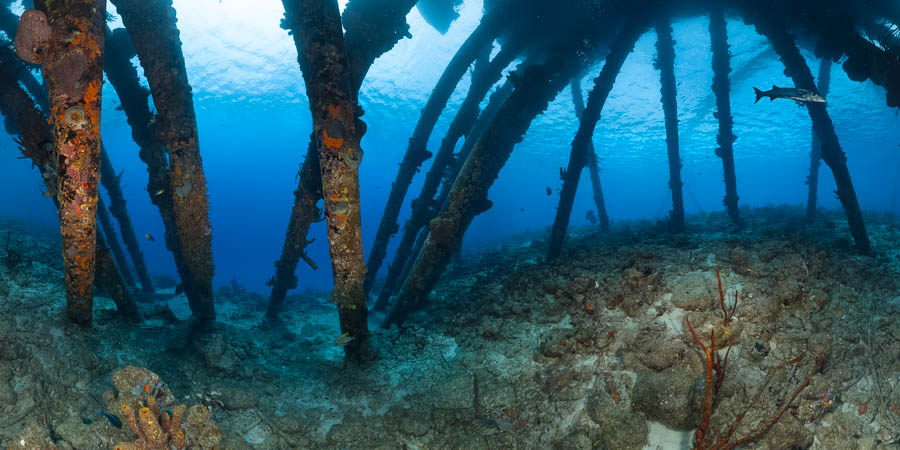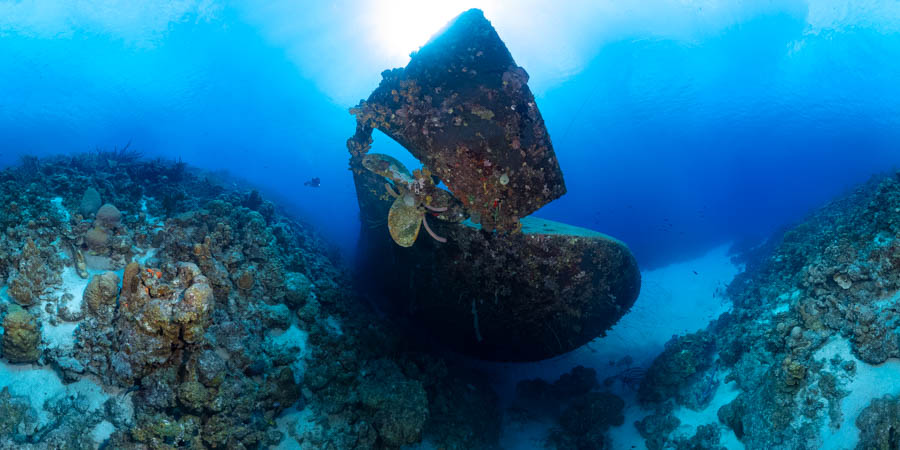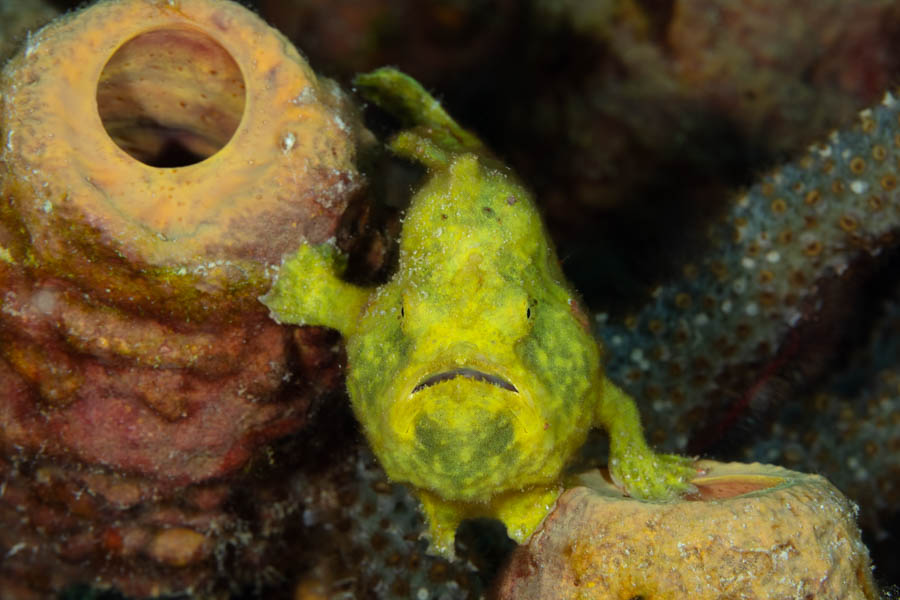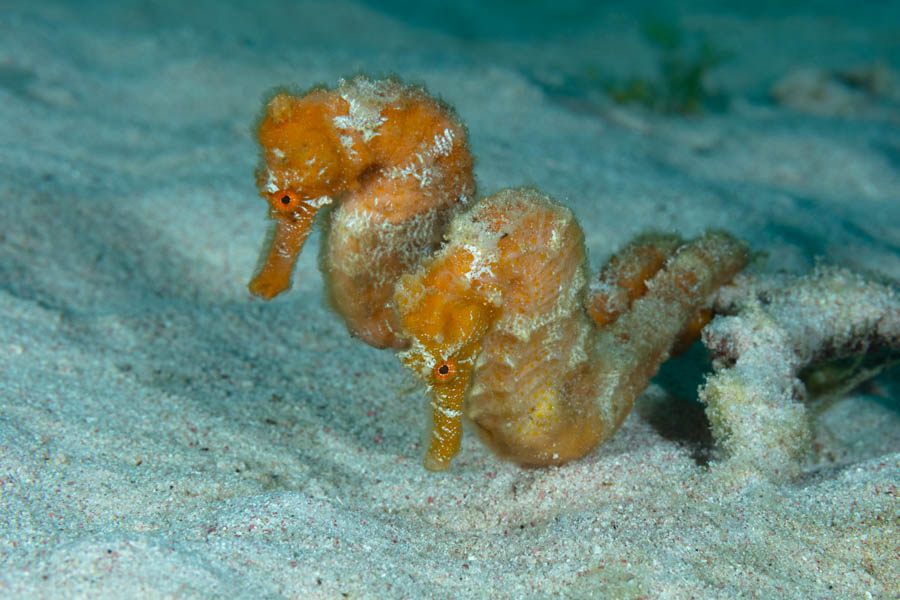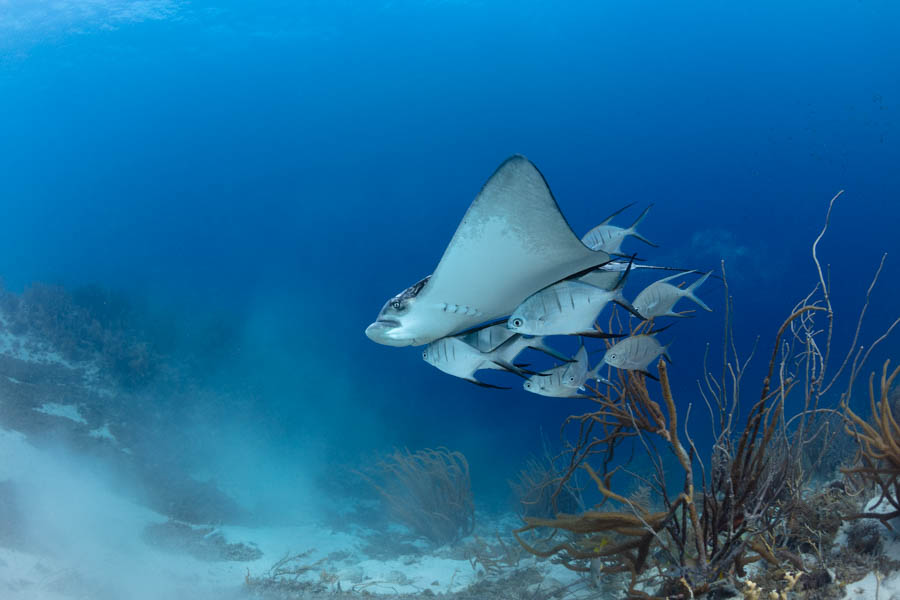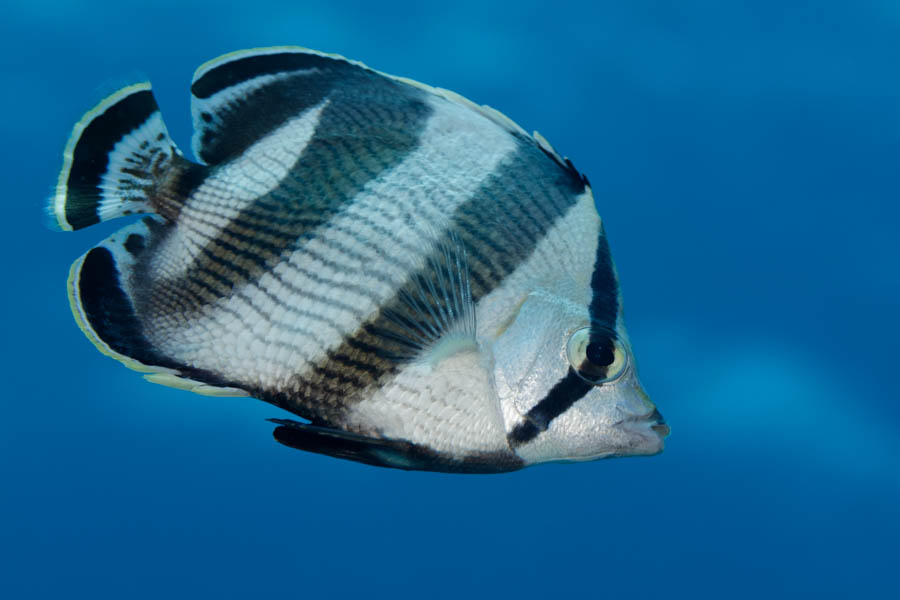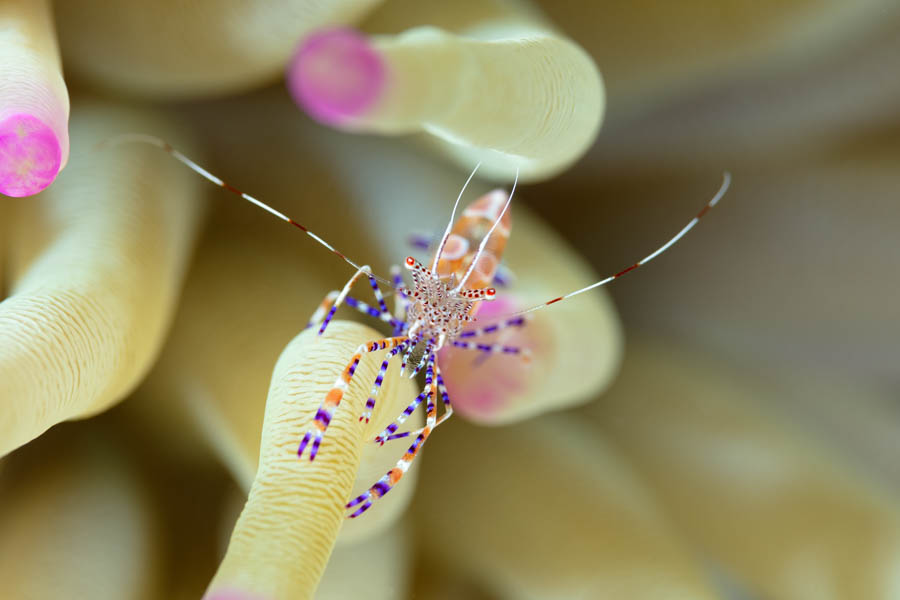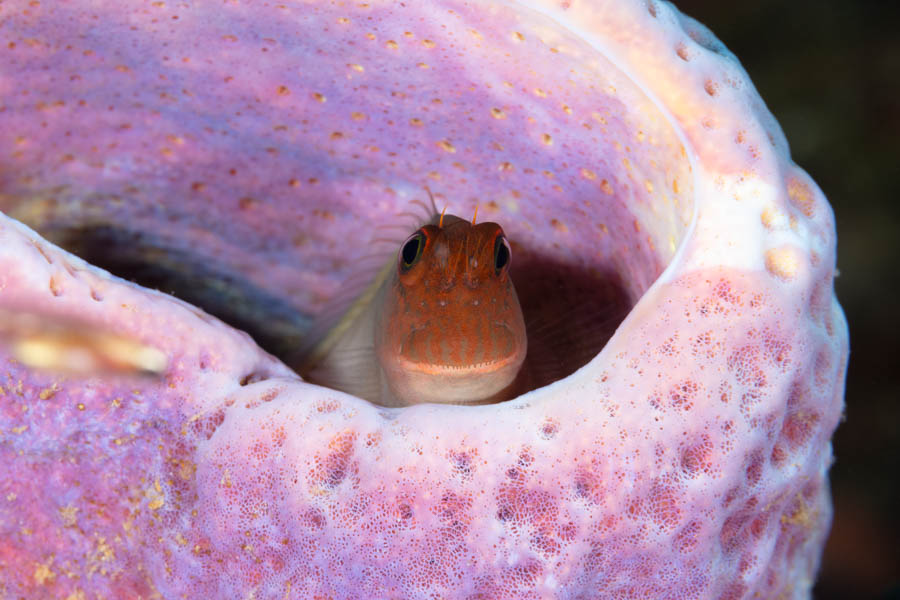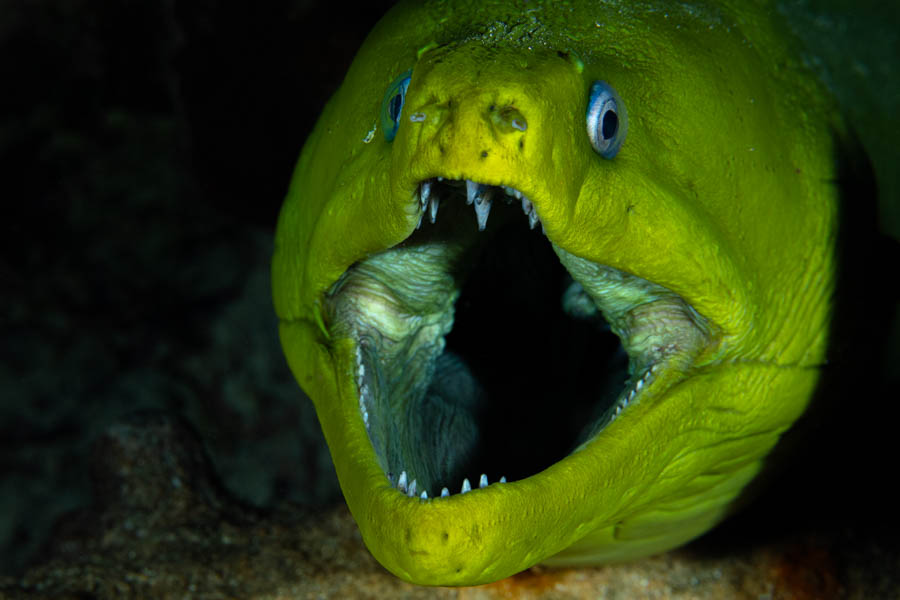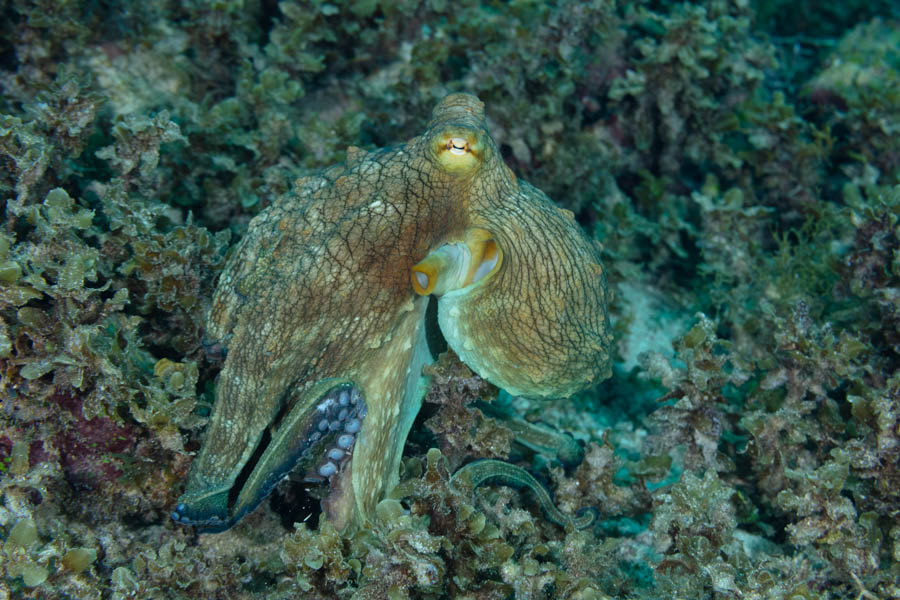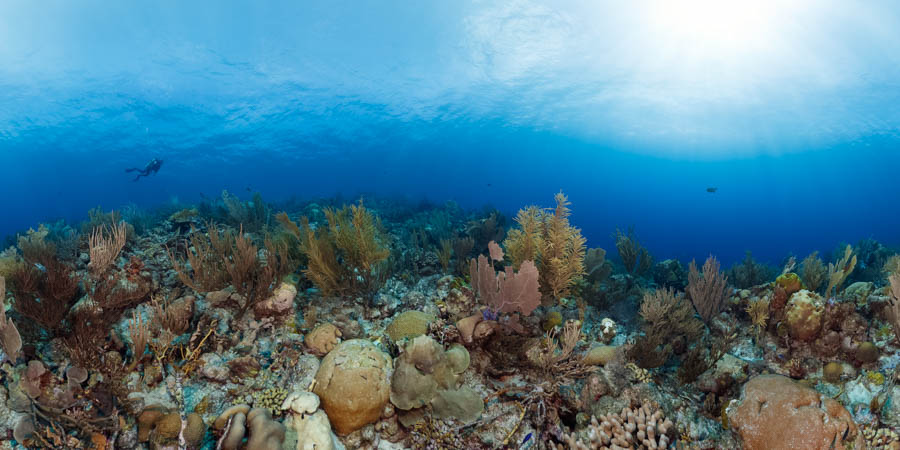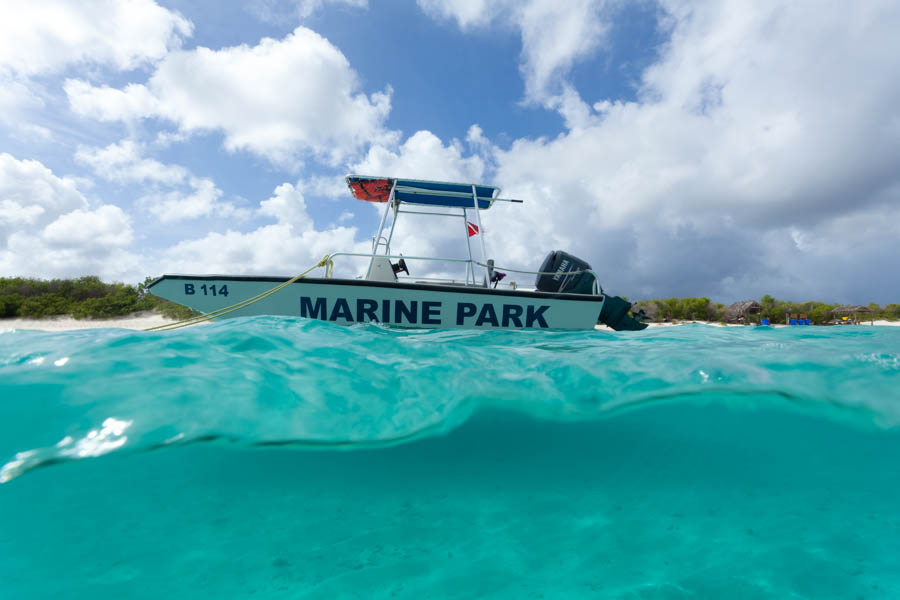The Bonaire Reef
Dive into the Underwater World of Bonaire with Stunning Photos of Reef Fish, Creatures, and Coral. See the beauty of Bonaire's underwater world come alive through my collection of underwater images. Browse the Bonaire Reef photo gallery and take a dive into the depths of Bonaire's underwater paradise.
Diving at the Salt Pier
Bonaire
is a small island located in the Caribbean Sea, known for its beautiful coral reefs and clear turquoise waters. Bonaire is considered one of the top diving and snorkeling destinations in the world.
The island is home to over 90 dive sites, and offers a wide variety of diving experiences for visitors. The healthy coral reefs provide an ideal environment for marine life with an abundance of colorful tropical fish, sea turtles, rays and even occasionally a shark. Bonaire is a diver's paradise.
But Bonaire offers much more than just underwater adventures. This Dutch Caribbean island is also home to some of the most beautiful beaches, national parks, and wildlife in the region. Whether you're an experienced diver or a first-time visitor, there's something for everyone on this paradise island.
Seru Largu Hill Top
Hilma Hooker
One of the most popular diving spot on Bonaire is the Hilma Hooker shipwreck. This 185-foot freighter was deliberately sunk in 1984 to create an artificial reef, and is now home to a wide variety of marine life. Divers can see a diverse range of eel species and tarpons swimming in and around the wreck. The wreck is also an excellent spot for night diving, as the ship's structure provides an intriguing and interesting experience.
Salt Pier
Another popular spot is the Salt Pier, which offers a unique underwater adventure as divers can explore the pilings and underwater structures of the pier. Divers can swim through the pilings and see an abundance of fish, turtles, barracuda and even an occasional eagle ray. Night diving at the Pier is also an exceptional experience as the pilings offer a one-of-a-kind and fascinating environment in the dark.
Something Special
This dive site is situated in the heart of Kralendijk and is known for its diverse marine life. Divers can expect to see everything from small colorful reef fish to larger species like barracuda, grouper, tarpon and jacks. This dive site is also ideal for those seeking to spot a frogfish.
Andrea I
Is a stunning site renowned for its diverse coral formations and abundant tropical fish. This site is not only a popular destination for diving, but its shallow waters and crystal-clear visibility make it a perfect place for snorkeling, offering easy observation of the lively marine life such as turtles and various species of parrotfish.
Red Slave
This site is a demanding dive location that requires seasoned divers due to its strong and unpredictable currents. The dive site boasts a dramatic drop-off and predominantly features delicate soft corals. Dives over the sandbar offer the chance to witness majestic stingrays and eagle rays. This underwater world is also home to a variety of marine life, including barracuda, sea turtles, reef squid and even seahorses.
Oil Slick Leap
This dive site is known for the abundance of marine life that can be found here. Despite its name, which originates from the oil terminals that were once planned for the area, Oil Slick Leap is a picturesque dive spot, with convenient parking and stairs available. Common residents include snappers, parrotfish and barracudas.
Klein Bonaire
This small, uninhabited island just off the coast of Bonaire is home to some of the best diving in the area. All dive sites on the island are only accessible by boat, but the effort is well worth it. With clear waters, healthy coral reefs, and a wide variety of marine life, Klein Bonaire is a must-see for any diver visiting the island.
Wayaka II
This dive site is located in the Washington-Slagbaai National Park and offers a fantastic snorkeling and diving experience. Snorkelers will be able to explore the site's crystal-clear waters and thriving coral reef, which are home to a wide variety of marine life. The dive site also offers a scenic journey through the National Park, providing a chance to explore the island's natural beauty and discover the unique local flora and fauna, including the famous pink flamingos.
Diving at the Hilma Hooker Shipwreck
Reef Fish Bonaire
One of the main attractions of the island is its vibrant marine life, including a rich variety of reef fish, each with their own unique characteristics and colors. The Longlure Frogfish, Queen Angelfish, Longsnout Seahorse and Green Sea Turtle are just a few examples of the amazing marine life that can be found in Bonaire.
Longlure Frogfish
The Longlure Frogfish is a highly sought-after species on Bonaire's coral reef. With a lure-like extension on its head, it uses it to attract its prey which it quickly devours. Often found hiding on sponges or coral, these creatures can change their color over time to blend in with their surroundings, making them difficult to spot.
Intermediate Queen Angelfish
The Queen Angelfish is a magnificent creature known for its bold blue and yellow hues and its long, flowing fins that add grace and elegance to its appearance. With its vibrant coloration and striking form, this species is a must-see for anyone exploring the underwater world of the Caribbean.
Longsnout Seahorses
The Longsnout Seahorse is a marvel of nature with its unique, elongated snout and remarkable ability to blend into its surroundings. They come in a range of sizes and colors, including brown, yellow, orange, and black, each with their own intricate and distinctive markings. These graceful creatures are a treat for divers to observe in their natural habitat.
Spotted Eagle Ray (with Palometas)
The Spotted Eagle Ray is a member of the eagle ray family of stingrays, known for its recognizable spots and flapping fins resembling wings. Its unique snout that resembles an eagle's beak or a duck's bill adds to its distinctive appearance. Typically a solitary predator, these rays may also be seen swimming in small groups. These rays are fascinating to watch as they use their wing-like fins to swim and feed on small fish and crustaceans.
Banded Butterflyfish
Banded Butterflyfish are known for their distinctive black bands that run vertically along their body, giving them a striking appearance. One of the bands covers its eye, making it difficult for predators to determine which end is the head and tail.
Lettuce Sea Slug
The Lettuce Sea Slug gets its name from the lettuce-like ruffles on its back. Its color varies from pale green to blue and white. These slugs can often be found resting on the coral and rocks that lay at the top of the reef.
Spotted Cleaner Shrimp
The Spotted Cleaner Shrimp can be found in Giant Anemones, particularly in areas known as cleaning stations where fish congregate for grooming. Cleaner shrimps are specialized cleaner organisms that feed on the external parasites, dead tissue and bacteria of other organisms. They have an important role on the reef ecosystem, by keeping the inhabitants clean and healthy.
Redlip Blenny
Redlip Blennies are known for their striking red lips, which stand out against their typically gray or white bodies. They can often be found hiding in crevices or among coral, and are known for their timid nature. Despite their small size, they make for a fascinating sight on any dive.
Green Moray Eel
The Green Moray is known for its distinctive green color. They make their home in crevices and caves, feeding on smaller fish and crustaceans. The Green Moray Eel is an impressive underwater creature to see and an exciting encounter for divers.
The Common Octopus
The Common Octopus is a master of disguise. With its ability to blend into its surroundings, the octopus is a fascinating creature to observe and learn about. Don't be surprised if you have to look closely to spot this camouflaged expert hiding in plain sight.
Green Sea Turtle
The Green Sea Turtle is a unique species known for its striking green coloration and round face. They can often be seen gracefully swimming through the water and can weigh up to 500 pounds. Bonaire has a year-round population of juvenile and sub-adult Green Sea Turtles, with adult turtles only present during the nesting season.
Tips for Diving in Bonaire
Diving in Bonaire is year-round, with an official season from December to April. Despite rainy and windy seasons from November to August, visitors should seize the chance to explore the beautiful reefs whenever possible. Anytime is a great time to take a trip to Bonaire.
Diving in Bonaire is considered to be very safe, due to the island's strict dive regulations and the convenience of all dive sites being easily accessible from the shore. However, it's crucial to be aware of the risks involved with diving, such as decompression sickness and nitrogen narcosis, and to always dive within your limits. Additionally, make sure your dive equipment is in proper working condition.
When diving in Bonaire, it's important to keep an eye on the currents as some dive sites have strong currents that can make diving more challenging. Before diving, check the current conditions and plan your dive accordingly. Additionally, be mindful of the diverse marine life, as Bonaire is home to various fragile species such as sea turtles, seahorses and frogfish. Respect the marine life and avoid disturbing or harming them.
For those who are not certified divers, Bonaire offers various dive centers and self-employed dive instructors that provide scuba diving lessons and certification. Be sure to choose a reputable dive center or a certified experienced freelance instructor.
Diving at Willemstoren Lighthouse
Other Activities on Bonaire
Bonaire is an ideal destination for outdoor enthusiasts and water sports fans. With its clear waters and steady trade winds, the island attracts windsurfers, kiteboarders, and stand-up paddleboarders. Beyond water sports, Bonaire offers opportunities for exploring its natural beauty through hiking and mountain biking, and learning about its rich history and culture. From diving to adventure sports, visitors will find a diverse array of recreational activities on this island paradise.
Bonaire is home to some of the most beautiful national parks and wildlife in the region. The Washington Slagbaai National Park, located in the northwest of the island, is a popular spot for hiking and birdwatching. The park is home to over 250 species of birds, including the endangered pink flamingo. The Gotomeer is also a great place to look for flamingos. Gotomeer is a shallow lagoon that's home to a wide variety of wading birds and other wildlife.
Bonaire offers a rich culture and history to explore. The island was colonized by the Dutch in the 17th century and has a unique blend of Caribbean and Dutch influences. Visitors can visit the island's capital city of Kralendijk, which is home to a number of historic buildings and monuments. The island also has many festivals and events, like the Taste of Bonaire, where you can try the local food. The Taste of Bonaire is held throughout the year at Wilhelmina Park in Kralendijk.
And Bonaire is home to some of the most beautiful beaches in the Caribbean. The island's sandy beaches are perfect for swimming, sunbathing, and relaxing. Some of the most popular beaches include Sorobon Beach, Lac Bay, Te Amo and Pink Beach.
Bonaire is a tropical paradise that offers a wide range of activities for all types of travelers. Whether you're a scuba diver, nature lover, or looking for a relaxing Caribbean vacation, Bonaire has it all. From its crystal-clear waters, vibrant coral reefs, and national parks to its beautiful beaches, there's something for everyone on this paradise island.
Wayaka II in the National Park
Links
- Visit the Bonaire Reef archive for more interesting underwater images.
- Visit my breathtaking 360 panoramic views for an enhanced Bonaire experience.
- Click here to access the previous version of the Bonaire Reef website.
- Join my Bonaire Underwater Photography Workshop or take the PADI Digital Underwater Photography Course.
- Visit the Bonaire Fish Identification page for an overview of Reef Fish on Bonaire.
- Visit the Bonaire Creature Identification page for an overview of Reef Creatures on Bonaire.
- Click here if you are interested in some AI generated underwater images.
